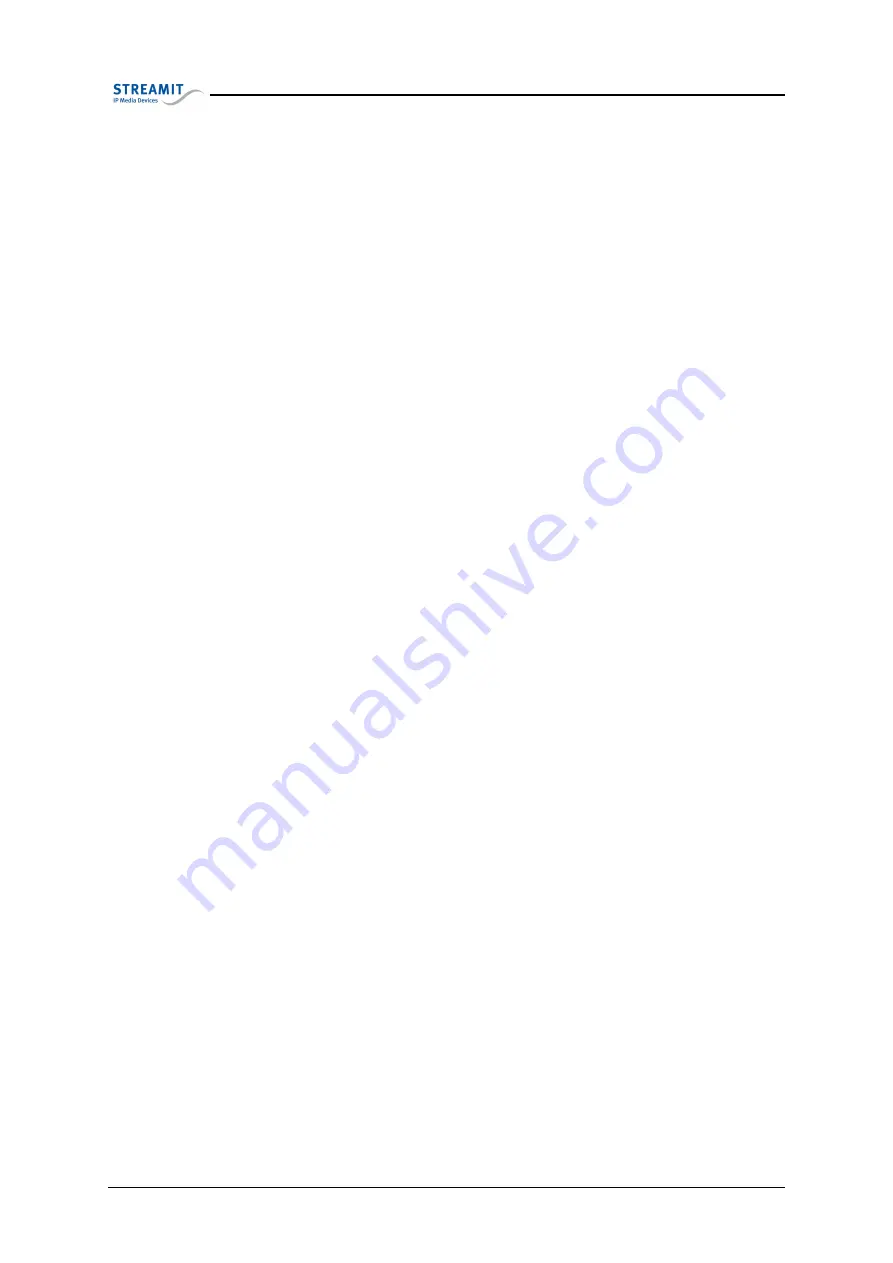
4.1
Audio encoding and streaming
4.1
Audio encoding and streaming
The SAS220 can encode audio into one of the following formats:
•
MP3 with constant bitrate.
•
MP3 with variable bitrate.
•
Ogg Vorbis (with variable bitrate).
So, which format should you use and what do you need to consider?
4.1.1
Which format to choose
When deciding which format you have to use, there are few things you have to take into consideration,
such as compatibility, quality and bandwidth usage.
You encode the audio, so that it can be received and played by an audio streaming receiver device (e.g.
a Lukas, Lisa, or SIR device). Depending on the setup an audio distribution server might be involved,
for distributing the audio to the receiving devices.
First and foremost, you need to make sure that all of the components in the setup support the audio
format. So, it is not a good idea to encode in Ogg Vorbis, if some of the receiving devices are of type
Lukas I, which only support MP3.
When compatibility issues have been considered/resolved, then you would look at the advantages a
format offers, such as quality/bitrate proportion, licensing costs etc.
Ogg Vorbis is a completely open, patent-free, professional audio encoding and streaming technology with
all the benefits of Open Source. Vorbis is a lossy codec just like MP3, but sounds better than MP3.
More information about Ogg Vorbis and comparison with other commonly used formats, can be found
at
http://en.wikipedia.org/wiki/Ogg_Vorbis
4.1.2
Encoding quality
When encoding audio using lossy codecs (which Vorbis and MP3 both are), the quality of the resulting
stream depends on the encoding parameters used.
You could say that for the same codec, the higher the quality, the higher the bitrate of the resulting
stream.
When encoding at a constant bitrate, all input audio is encoded uniformly. As you can imagine, this is
not always very efficient. Some audio parts are ’easier’ then others (e.g. silence, slow instrumental music
etc.) and it would be possible to encode with ’less bits’.
In contrast to constant bitrate, when encoding using variable bitrate the encoder will try to keep the
quality constant i.s.o. the bitrate. There are fewer bits required for encoding easy audio fragments then
difficult ones. As a result, the bitrate of the resulting stream is changing continuously around a nominal
value.
Ogg Vorbis performs by design better in variable bitrate mode. For this purpose, it is not possible to
configure the SAS220 to encode Ogg Vorbis at a constant bitrate. When you choose for Ogg Vorbis you
have automatically chosen for variable bitrate.
While for MP3 a nominal bitrate is used, for Ogg Vorbis the use of a quality factor is typical. The quality
factor in combination with the sampling frequency also results in a nominal bitrate. The quality factor
can have the value 0-10 (5 is typical).
Below, you can find a lookup table with an overview of what nominal bitrates would be achieved for the
different samplerate/quality-factor combinations.
Version 1.3
28/10/2015
10 of 21








































